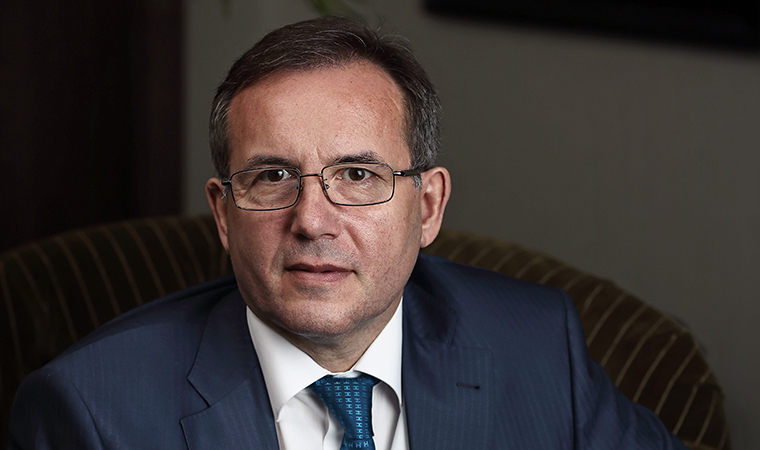
On the uranium market
back to contents– Mr. Konstantinov, do you think the uranium market will recover?
– It will recover when there is a balance between the fuel demand from nuclear power generators and market supply of uranium coming from different sources. This is inevitable because no new deposits are developed and uranium production will decrease.
– U1 doubled its revenue in 2015 despite difficulties and the depressed market. Do you expect the growth to continue into 2016?
– We demonstrated positive performance in 2015. U1 generated 6.7 billion rubles in net profit compared with a net loss of 10.9 billion rubles a year before. Our revenue in ruble terms more than doubled and reached RUB 45 billion. The key driver behind the growth was an increase in sales on the international market. EBITDA in 2015 reached 18 billion rubles, having nearly doubled year over year. This level is sufficient to maintain high operational efficiency of the company. It should be also noted that Uranium One outperforms the world’s leading uranium producers in terms of production costs. In a joint effort with the Kazakh national nuclear company Kazatomprom, we brought uranium production costs down to below 12 US dollars per pound against 14 US dollars in 2014. The cost reduction program will last 5 years and is expected to yield excellent results.
Over the last few years, production rates remained almost flat at about 4,800 tons, including our shares in Kazakh joint ventures. Together with Kazatomprom, our total production is nearly twice as high. We are guided in our operations by contract terms that limit maximum and minimum production volumes. Nevertheless, we are targeting an amount that is set in the program – about 6,000 tons of uranium per annum.
– Do you consider opportunities for Uranium One Group to expand into non-core businesses for the purpose of diversification, say, enter the market of rare earth or precious metals?
– New business development is yet another goal set by Rosatom, along with the revenue growth, project portfolio expansion and cost reduction. The company cannot remain a manufacturer of a single product, which is uranium for us, as this would make us too much dependent on the market situation. Therefore, we should expand into new mining businesses. This will be the right step from the diversification standpoint. This strategy will open the way to new market niches and increase the company value.
Today is the right time indeed to enter new businesses since metal prices have fallen and we can acquire new assets at an affordable price. However, we need to have a clear picture of what assets will pay back, when demand for a certain mineral will rise, when we will reach a break-even point and how it will influence the company value. According to our analysis, the most attractive mineral resources are copper, gold and platinum-group metals. Our advantage is that we can tap to our expertise in uranium extraction by in-situ leaching to develop non-uranium deposits. We will also develop other extraction methods if necessary.
– What is the progress in Mkuju River, a uranium development project in Southern Tanzania?
– We keep the project running and stay in contact with Tanzanian ministries involved, trying to promote an efficient, low-cost in-situ leaching process, which is new for this country but quite common for us. At present, we are pilot-testing the process on site to verify its economic feasibility. The in-situ leaching technique will reduce costs and make the development feasible when market prices begin to rise.
– I cannot help asking about elephants…It is widely known that Uranium One takes part in wildlife protection efforts and, in particular, supports the Selous Game Reserve near Mkuju River…
– Yes, it is true. Some uranium deposits are in close proximity to the Selous Game Reserve, one of the largest game reserves in Africa. At the Tanzanian Government’s request, we joined the national anti-poaching program to save the elephant population in the reserve. The number of elephants decreased from 100,000 in the 1970s to 13,000 in 2013 due to barbarian attacks of poachers hunting tusks. A corridor the elephants use to migrate from the north to the south of Africa and back crosses our development site. We provide equipment and training to a team of 20 scouts to patrol the game reserve on a regular basis. Last year alone, the scouts counteracted seven groups of poachers.




